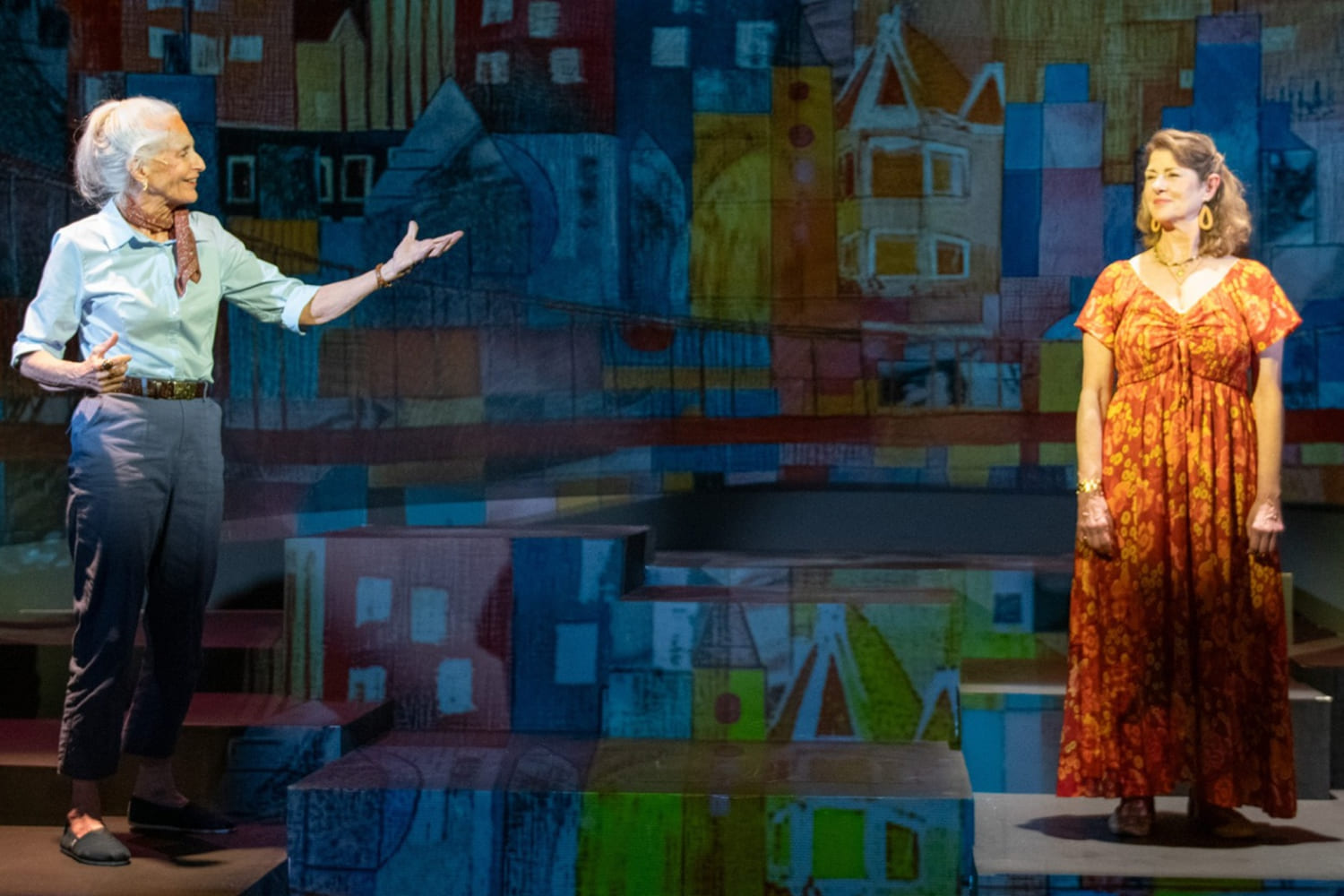
Sara Morsey as Diana and Patti Gardner as Alice in GableStage's "Summer, 1976" (Photo by Magnus Stark/courtesy GableStage)
Friendships can endure, but they can also be as fleeting as sweet dreams and live theater. Of course, we may cherish the memories that linger. But memory can also be transitory, even if our experiences are vivid. However, perhaps the impermanence of things we cherish add to their beauty.
These are some thoughts that may remain with you after you experience David Auburn's touching, funny, and relatable two-character memory play, "Summer, 1976."
South Florida actors Patti Gardner and Sara Morsey deliver solid performances as Alice and Diana, respectively, in GableStage Theatre Company's well-done professional production of Auburn's play. It features creative direction by GableStage Producing Artistic Director Bari Newport, with assistance from Bailey Hacker, and dramaturgy by GableStage Resident Dramaturg Ali Tallman.
The production runs about 90 minutes without intermission through Sunday, April 20. The venue is GableStage's intimate playing space next to the Biltmore Hotel in Coral Gables.
"Summer, 1976" centers on the unlikely friendship between Diana, a single mom and fiercely independent artist, and Alice. The latter is a free-spirited young housewife married to a university professor. Basically, the two women form an "odd couple."
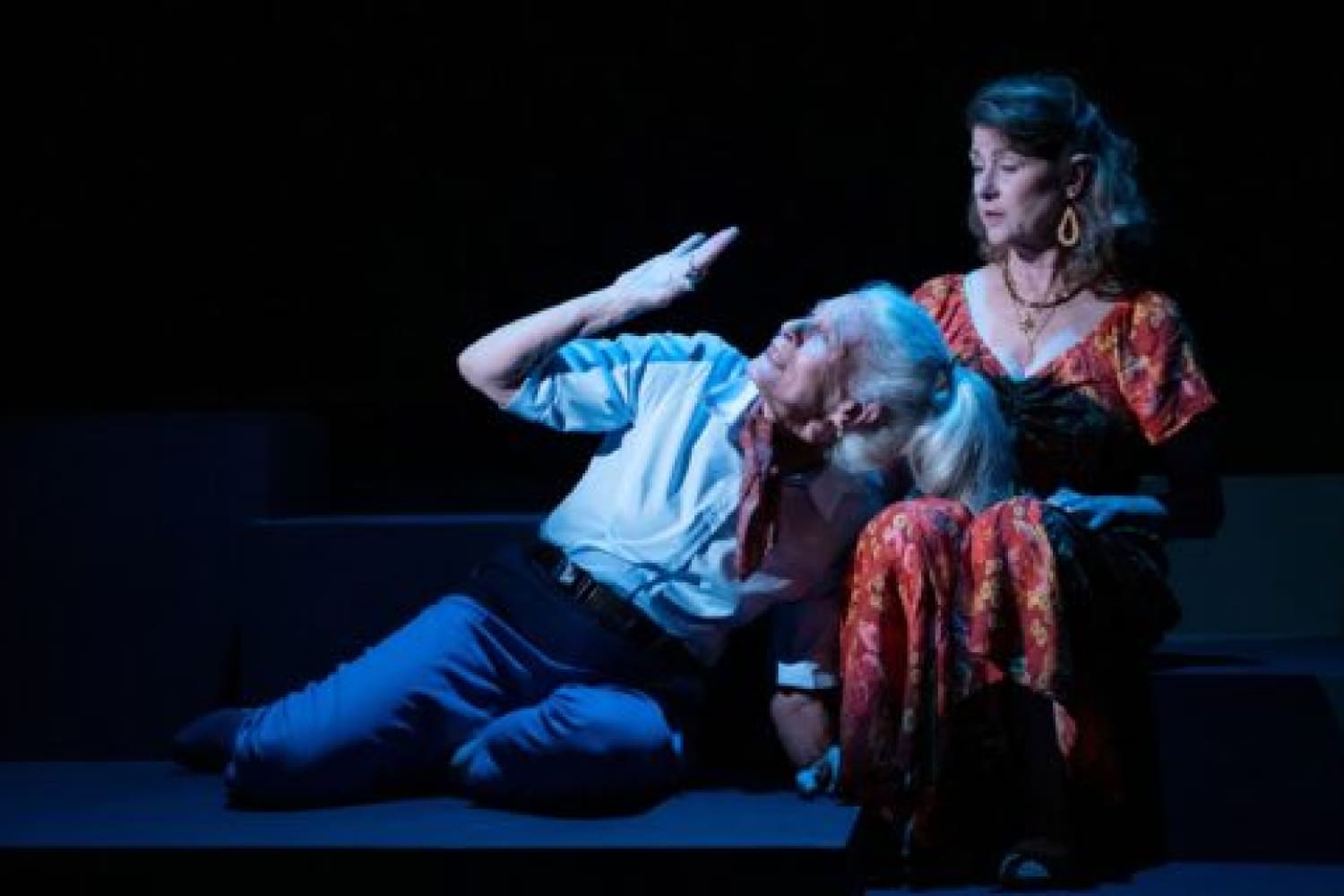
Sara Morsey as Diana and Patti Gardner as Alice become unlikely friends in "Summer, 1976." (Photo by Magnus Stark/courtesy GableStage)
But as the play progresses, we experience how the relationship evolves from tense to warm and lasts over decades. As the U.S. celebrates its bicentennial in the Summer of 1976, Diana and Alice navigate topics such as motherhood, ambition, and connection. Also, the two women help each other discover their own independence.
You may be familiar with Auburn through his Pulitzer Prize and Tony Award winning 2000 play, "Proof," which has undergone fine productions in South Florida. This riveting, relevant, and layered piece jumps back and forth in time and covers themes such as inheritance, uncertainty, and mental illness. Auburn also briefly touches on mental illness in "Summer, 1976." And, as in "Proof," the play set during the country's bicentennial flashes back in time.
Auburn largely structured "Summer, 1976" as alternating monologues between Diana and Alice. The women look back during the time their paths crossed during a summer of the mid-1970s. More specifically, the two women meet through a babysitting co-op that Alice's husband, Doug, forms during the titular period in Columbus, Ohio.
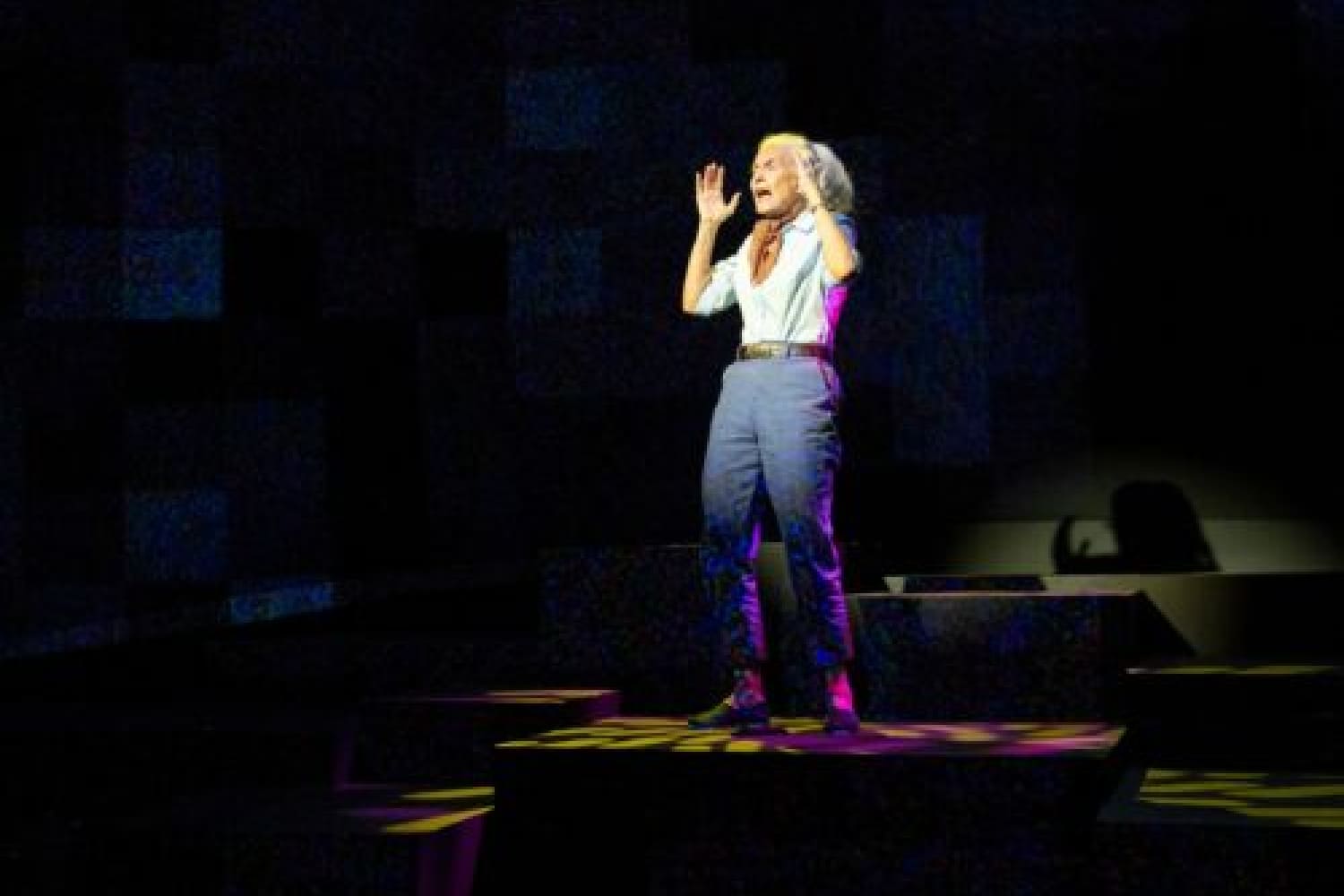
Sara Morsey as Diana in David Auburn's "Summer, 1976" (Photo by Magnus Stark/courtesy GableStage)
"We became friends, as you often do, through our children," Diana tells us at the top of the play.
Much of "Summer, 1976" features vivid writing, as well as everyday language such as the aforementioned. At times, the play feels like a conversation with friends or acquaintances over coffee or tea. The intimacy of GableStage's 138-seat theater reinforces this close atmosphere.
The downside to writing a play in the style of "Summer, 1976" is that the piece can feel static and passive if the characters merely tell us things rather than show us. Indeed, "show, don't tell" is a writing technique that encourages writers to tell stories through actions, thoughts, sensory details, and feelings, rather than solely narration.
To Auburn's credit, he does not allow the characters to become mere "talking heads." Instead, the playwright switches up between alternating monologues and recreation of dialogue from the characters' past. As a matter of fact, some of the play's dialogue is practically rapid-fire, as though we were listening to a hotly contested debate.
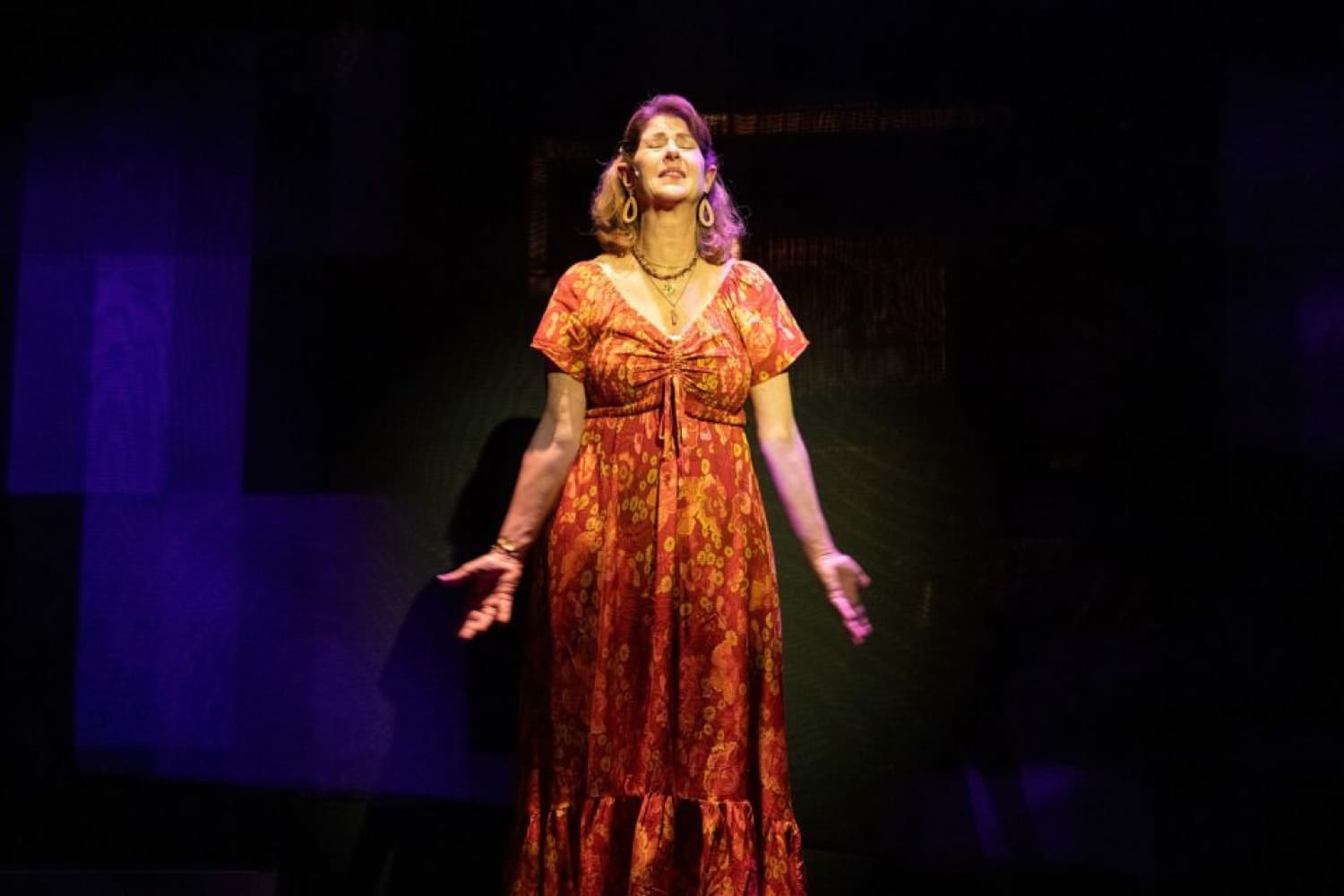
Patti Gardner as Alice in GableStage's "Summer, 1976" (Photo by Magnus Stark/courtesy GableStage)
Diana and Alice are the only onstage characters. Alice's husband, Doug, and the main characters' children from 1976, Gretchen and Holly, are offstage characters. In other words, we do not see or hear them. However, sometimes one or more of the main characters speak as Doug or other characters not physically present.
For her part, Newport prevents GableStage's production from becoming static or passive. In particular, the director moves the actors around the stage. In addition, under Newport's direction, while one actor speaks, the other mimes actions that the speaker is describing.
Newport and Sound Designer Sean McGinley also incorporate soft music to play as the actors speak. The music reinforces an aura of memory, along with dim, shadowy, non-realistic lighting by designer Tony Galaska. In addition, projection designer Jamie Godwin includes visuals such as those depicting fireworks. Also, when it appears as though Alice and Diana take a cross-country trip by car, we see photos of different parts of America. Certainly, the visuals contribute to the production's vibrancy.
Scenic designer Frank J. Oliva has created a series of rectangular shapes, or steps onstage, some higher than the others. These allow Newport to highlight one or both actors at a given time. The set design also includes a scrim that separates the present from the characters' past. Through the scrim, we see objects such as furniture. The divider keeps the objects far enough away from us that they seem like things from the past. But at the same time, we can clearly see them as though they represent vivid memories.
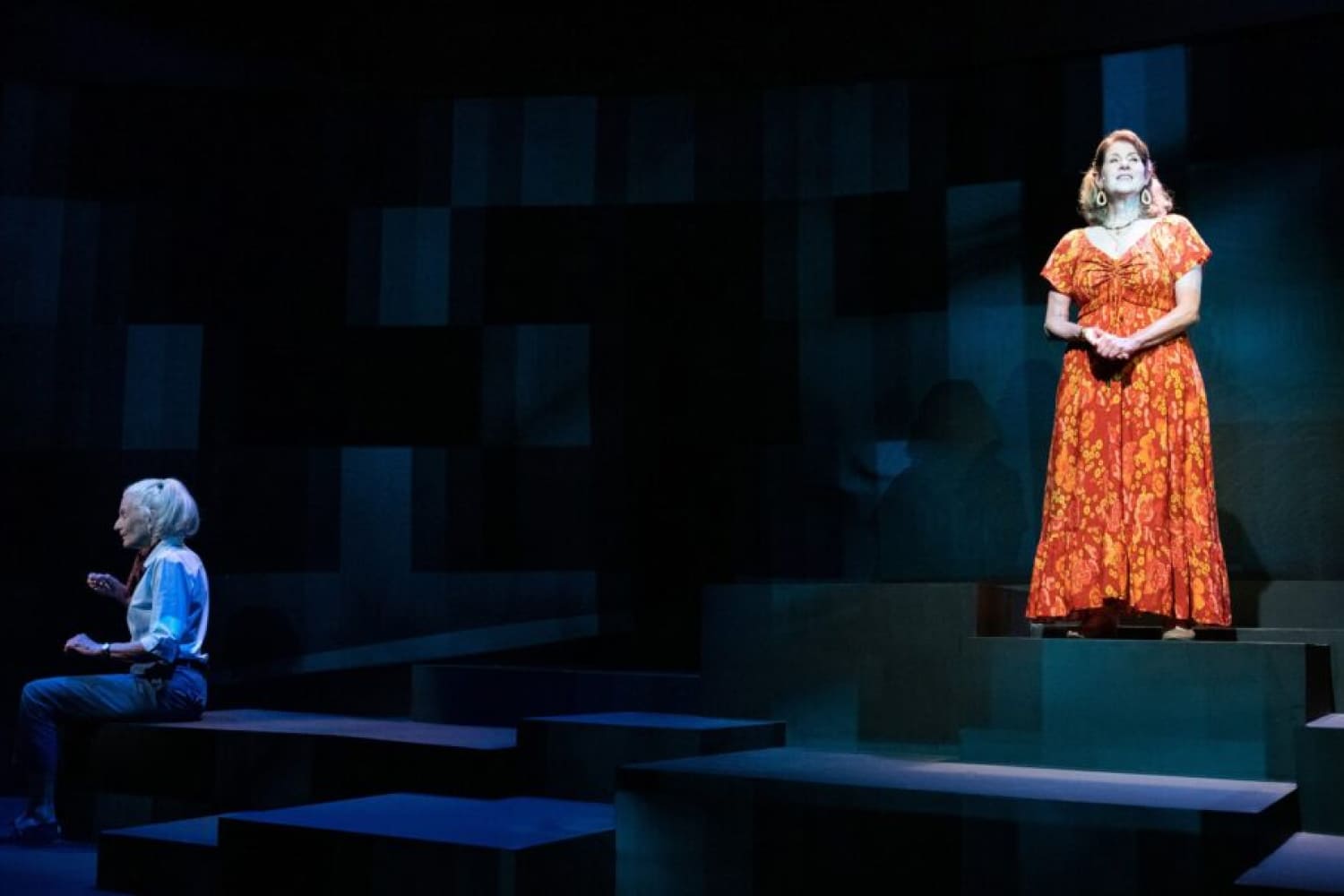
David Auburn's "Summer, 1976" at GableStage through Sunday, April 20. (Photo by Magnus Stark/courtesy GableStage)
Speaking of recollection, Gardner and Morsey, wearing Brooke Vacca's period costumes, portray their characters with an impressive familiarity. It suggests the events from 1976, although they happened decades ago, remain vivid in the minds of the characters, as though they just happened.
Diana describes Alice as "this sleepy-eyed little hippie" who "thought of herself as a free spirit, but she was in the most conventional of marriages." This reminds us that "no one is just one thing" as one of the characters says.
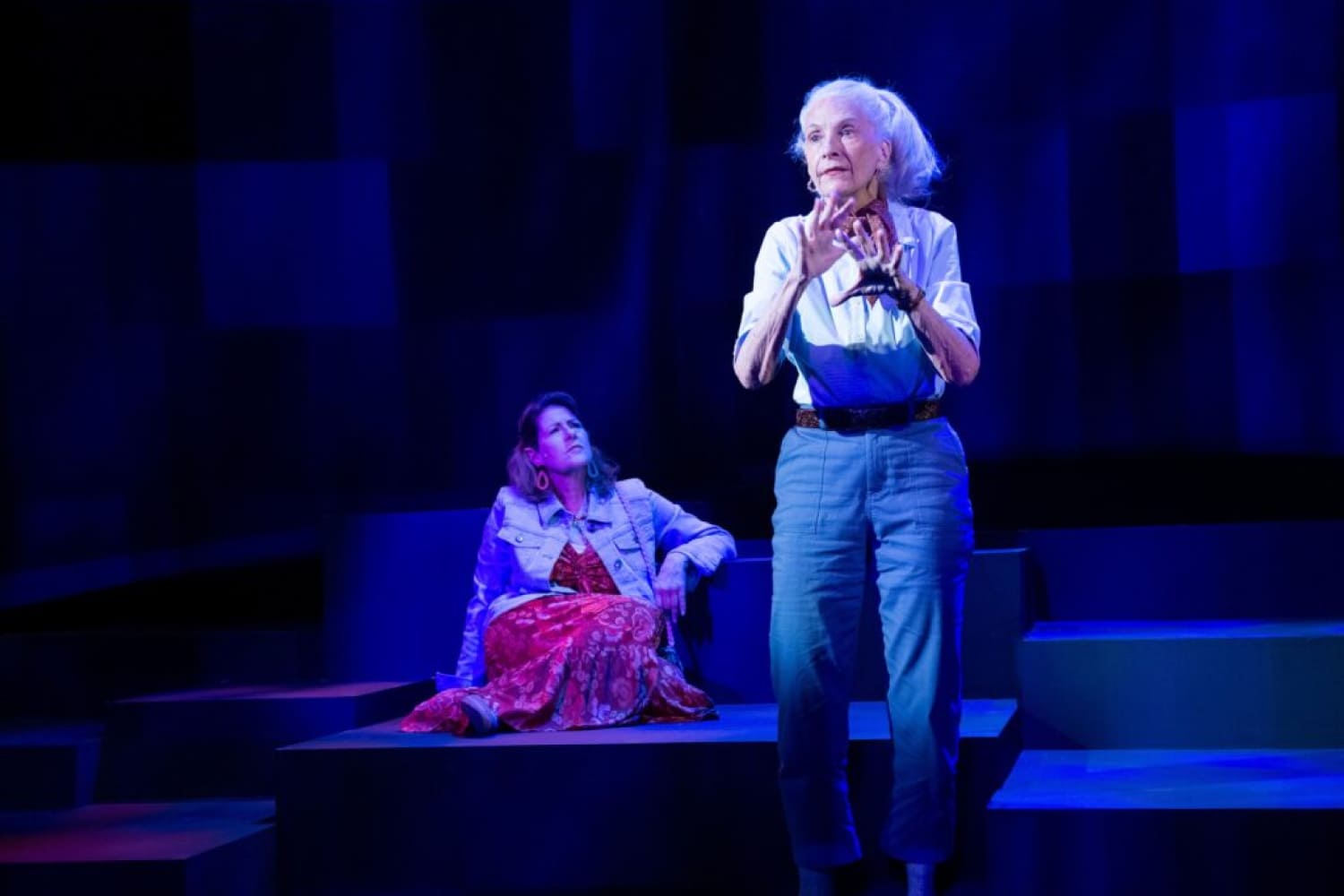
Patti Gardner as Alice watches as Sara Morsey as Diana tells a story about her life in "Summer, 1976." (Photo by Magnus Stark/courtesy GableStage)
Gardner's Alice is not necessarily "sleepy-eyed," but a vibrant, thoughtful, free-spirited, assertive woman who enjoys a good time. In addition to speaking, she intently listens as her friend narrates the past events from her perspective. Gardner creates a character with whom we would like to spend more time with.
Morsey's Diana is a frank person with an air of independence. She seems more uptight than Gardner's Alice. At times, Morsey closes her eyes, as though she is trying to concentrate fully while recalling an incident from her past.
Whether the characters are wisecracking, vulnerable, dreamy, lost, or sincere, the performances are consistently convincing.
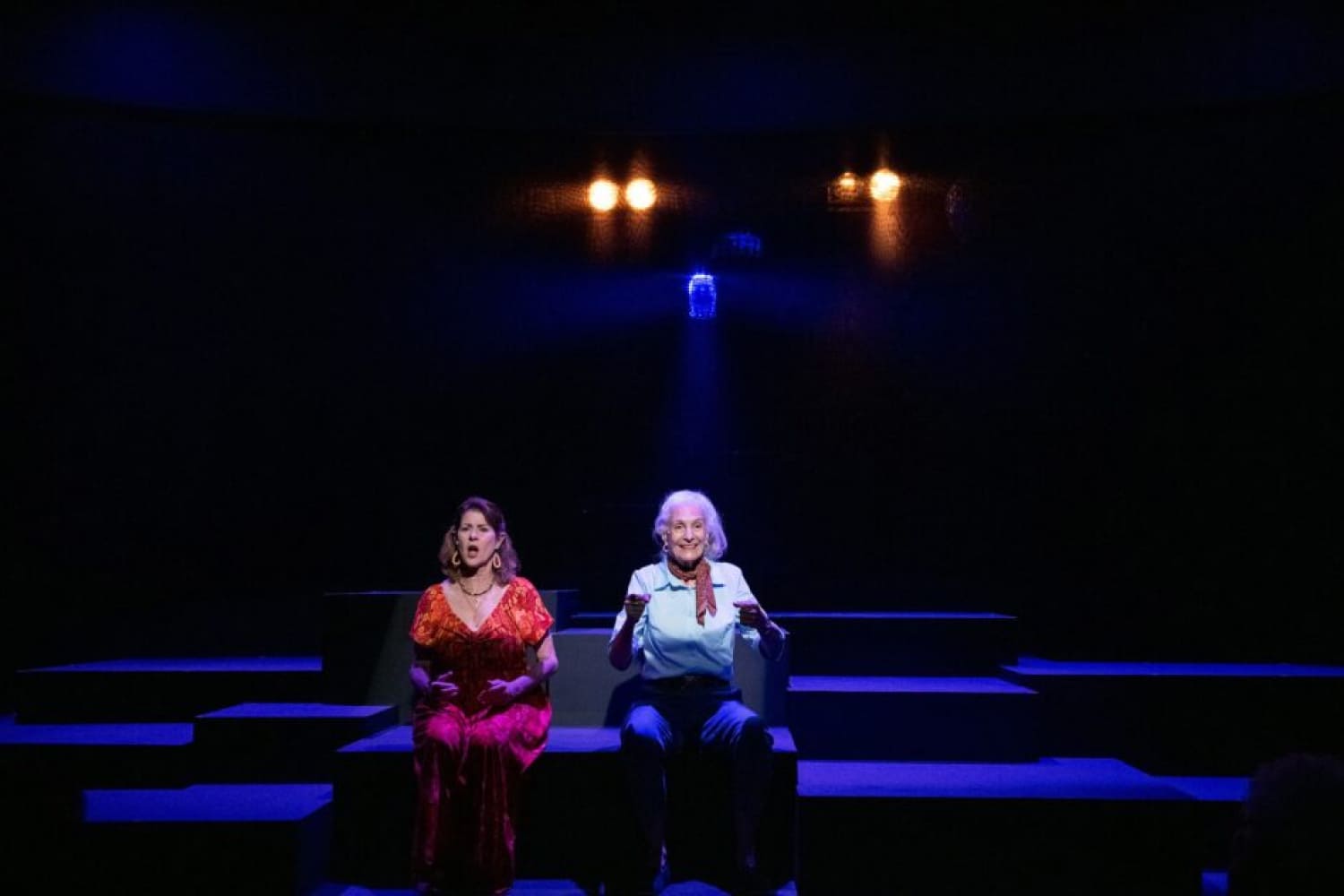
Alice (Patti Gardner) and Diana (Sara Morsey) take a road trip to an antiques store in "Summer, 1976." (Photo by Magnus Stark/courtesy GableStage)
Of course, much of the play takes place in 1976. It was a time when the second wave of feminism continued to gain momentum. Women's rights activists focused on issues such as reproductive rights, equal pay, and challenging traditional gender roles. Within this setting of activism and celebration of independence, it makes sense that Alice and Diana would look to take control of their lives. But even as she exists in 1976, Alice "lives like a 1950's housewife," in Diana's eyes.
While 1976 is almost 50 years ago, the march toward equality for both sexes continues. But these days, feminism focuses more on amplifying voices and advocating for change, addressing oppression, and using social media to amplify voices.
As it celebrated its 200th year, Americans reflected on their past while embracing hope for the future...just as we do today in 2025.
IF YOU GO
WHAT: "Summer, 1976", by David Auburn
WHERE: GableStage in the Biltmore Hotel, 1200 Anastasia Ave. in Coral Gables.
WHEN: 7:30 p.m. Tuesday, Thursday, Friday, and Saturday; 2 p.m. Wednesday and Sunday. Through Sunday, April 20
TICKETS: $50 and $60 includes a $10 service fee (discounts for students, teachers, artists, military, and groups). For more information, call (305) 445-1119 or go to www.gablestage.org.
 MAIN MENU
MAIN MENU

